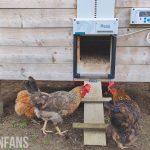Best Bedding for a Chicken Coop
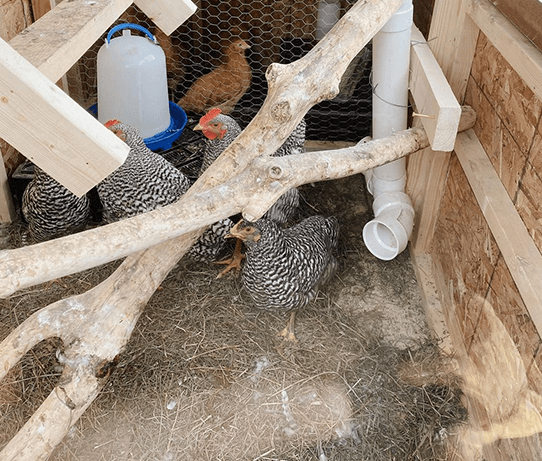
How do you choose the best bedding for a chicken coop? Providing the best bedding for your chickens isn’t about luxury. It’s a basic need for them to feel comfortable and happy. The proper bedding will keep your flock healthy and clean, but it also prevents eggs from cracking.
You should address several issues when choosing the right bedding for your chicken coop. We’ll tell you all about it in this article.
What is the Best bedding for a chicken coop?
The most common beddings are:
- Straw
- Pine shavings or cedar shavings
- Sand
- Shredded paper
Let’s dive in with the extensive overview and then go over them one by one.
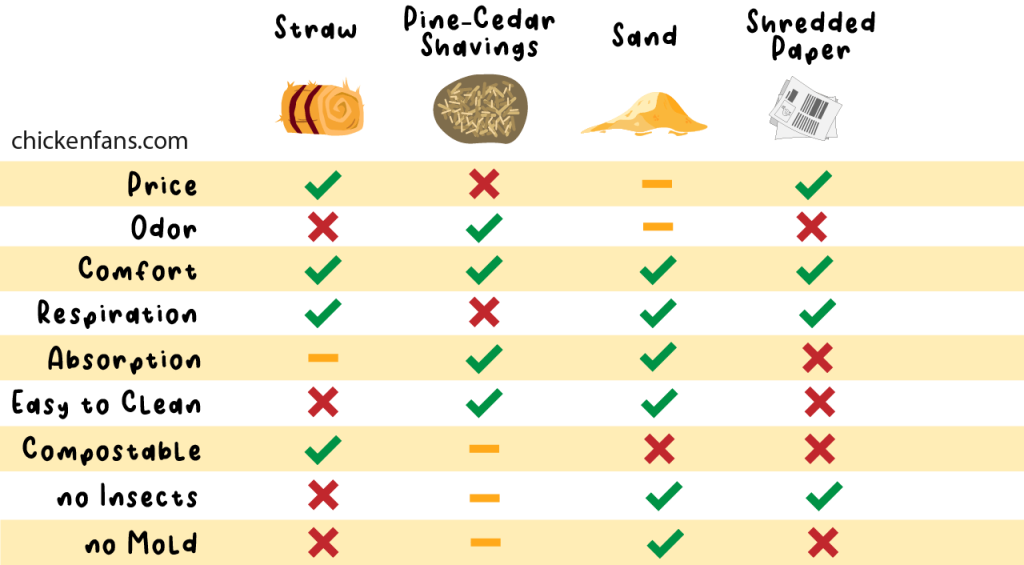
Straw
Chicken keepers commonly use straw for bedding the nesting boxes or inside the coop. If you’re an animal farmer, you likely stored an amount of straw. It works fine as chicken coop bedding; however, there are some things you need to keep in mind.
Straw is controversial. Some people love straw as a bedding solution, and others hate it.
Let’s look at the pros and cons.
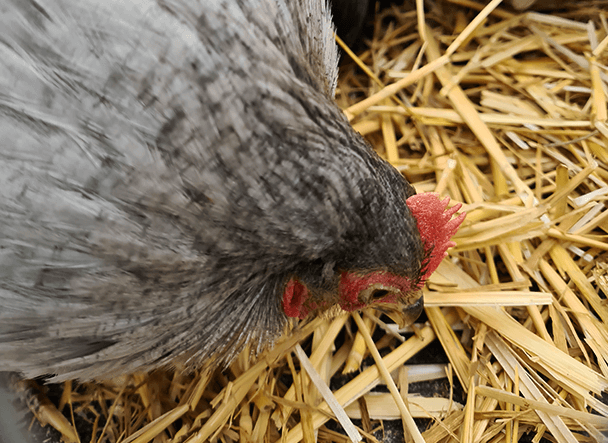
Pros of Straw as Bedding
- Accessibility. It can be purchased almost everywhere.
- Comfort. Chickens like to snuggle into the straw and play with it by scratching their feet around. Straw is a warm material that comes in handy in winter or cold areas.
- Compostable.
Cons of Straw as bedding
- Lack of odor control. Straw will rot after using it for a while and start to smell.
- Not all varieties are very absorbent and need to be replaced quite often.
- Difficult to clean. Due to rotting and lack of clumping it’s quite the chore to clean any used straw.
Pine or Cedar Shaving
Wood shavings are a favorite bedding material among chicken owners and come from different kinds of wood. Most common are pine and cedar shavings. Wood shavings, especially cedar shavings, are very popular because of their pleasant aroma and neutralizing effect. The smell also works as a natural insect repellent.
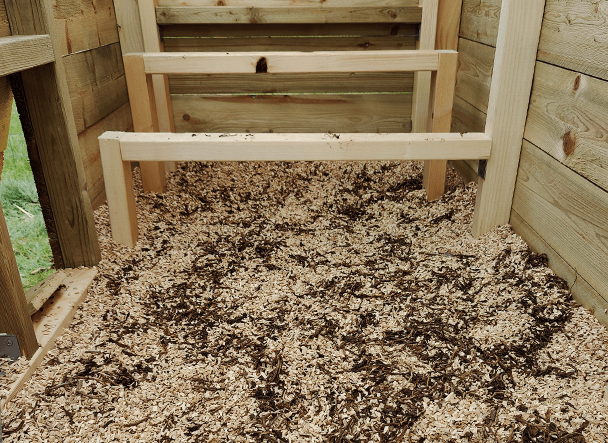
But we can’t discuss the pros without addressing the cons, and there is one major issue concerning wood shavings. The enchanting smell of cedar shavings can irritate the respiratory system of your chickens, albeit a controversial topic.
Nonetheless, better to be safe than sorry and only use pine or cedar shavings if your chickens have enough ventilation, outside space, or other places to inhabit.
Pros of Pine or Cedar Shaving
- Accessibility. Can be purchased almost everywhere.
- Comfortable and warm
- Compostable, although it takes some time to break down
- Excellent absorption
- Easy to clean the chicken coop
Cons of Pine or Cedar Shaving
- Cost. Can be pricey if you have a large chicken coop.
- Can irritate the respiratory system of chickens as they can ingest the small dust shavings which can cause crop impaction.
Sand
Can sand be the best bedding material for a chicken coop?
Sand is a valuable bedding material when you have the time to devote to it. When done right, sand as bedding material only needs replacing a couple of times a year, so it’s relatively cheap to use in the long run. Sand dries very quickly, clumps, and can be used as a deep littering method if turned quite often.
Like cat sand or cat litter, sand inside the coop clumps and dries the droppings. Use a rake or a shovel to turn the sand over several times for cleaning. The waste will sink to the bottom, and a clean layer of sand will form at the top. The easy maintenance comes in very handy when you have a larger-sized chicken coop and a large flock of chickens.
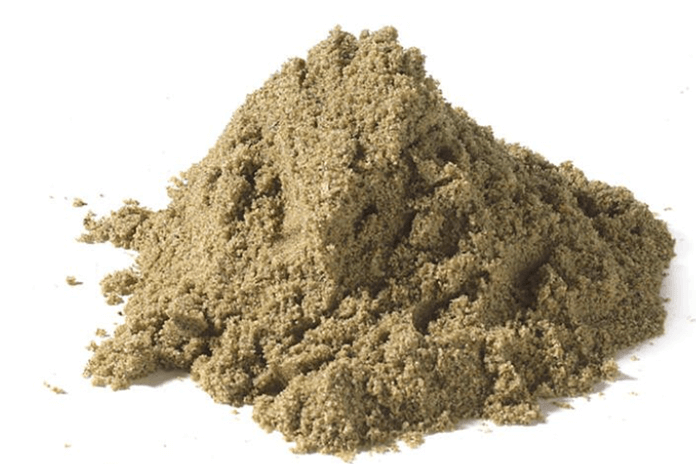
When you own a small-sized chicken coop, scoop out the droppings with a cat litter scooper and turn the sand afterward. Just like you do when cleaning the cat’s litter box.
It’s a great way to dispose of the chickens’ waste, as it only needs to be replaced twice a year.
What type of sand do I use?
Never use play sand or sandbox sand, as it can cause crop infection and may cause serious respiratory illness in the long run. Always use a construction sand mix with different-sized grains. River or bank-run sand can also be used. Construction, river, or bank-run sand proves beneficial to the digestive tract. When ingested, it functions as grit. Just make sure the sand is dry before you put it in place.
Pros of using sand as bedding
- Comfortable
- Easy to clean and absorbs well
- When turned or scooped regularly, smelliness will be controlled
cons of using sand as bedding
- Non-compostable. Do not add sand to your compost heap.
- If not turned or scooped regularly, sand will get smelly
- Quite pricey when purchased, but will be less expensive in the long run when used correctly
Shredded newspaper
This article addresses commonly used bedding, not only the best materials. Shredded newspaper is a no-go for us. We’ll explain by giving some examples and tell you why you should not use shredded newspaper as bedding inside your chicken coop.
Common cause of spraddle leg with baby chicks
Spraddle leg is a deformity of a chick’s legs, where the legs spread and point to the side instead of forward, making walking very difficult. A common cause of spraddle leg is the wrong bedding, such as shredded newspaper.
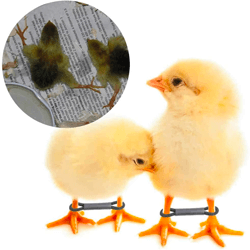
Newspaper shreds are very slippery, which causes a chick to twist its legs out from the hip and stay deformed unless treated. Spraddle leg treatment involves bracing and providing stability to the legs, so the chick learns to stand up by herself.
Toxic ink
Some newspapers use ink that easily rubs off on your chickens, leaving them with black residue on their feathers. Most modern newspapers no longer use petroleum-laden inks, but that doesn’t mean ink benefits your chickens. They eat just about anything, so it’s not uncommon for chickens to ingest newspaper shreds. Colored magazines use heavy metal-based ink that’s toxic for your flock.
Non-absorbent, smelly, chore to clean
The best way to convince you newspaper shredding is no good bedding material: cleaning the coop will be a real chore. When paper gets moist and wet, it smells, molts, and is harder to clean. Absorption is very poor, so you must regularly replace the shredded newspaper. Save yourself the trouble and go for a different chicken coop bedding.
Pros of using shredded newspaper as bedding
- Cheap
- Comfortable and warm
Cons of shredded newspaper
- No odor control
- Lacks absorption
- Not easy to clean as it has to be done regularly
- Non-compostable
- Toxic
- Causes spraddle legs with chicks
Let’s sum things up!
Various bedding materials can be found in stores, farm shops, or in your backyard, but always look for the best option for your flock. Some need more replacing (hence: more work) or are more expensive. Whatever works for your neighbors’ chickens may not work for yours. Try out a few options and choose the best bedding for your flock when in doubt.
Credits Featured Image: @tinyfarm_homestead (IG)



